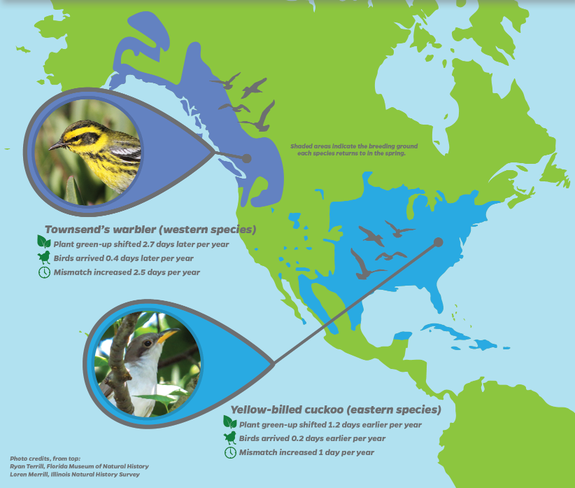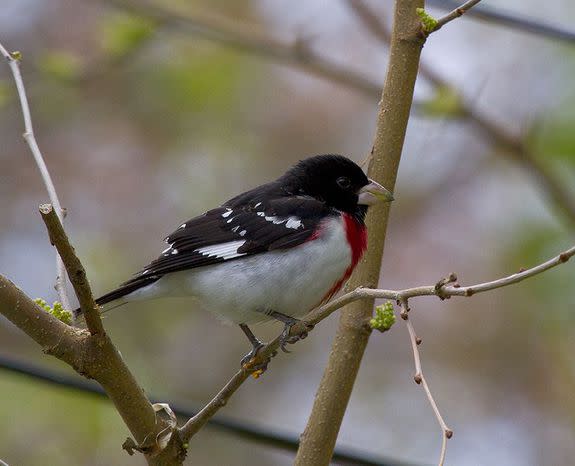Climate change is messing with all your favorite birds

Timing is everything for migratory songbirds chirping away in North America's trees.
If they arrive too late, they'll get only the scraps of spring's insect buffet. Plus, the best nesting spots and mates will be taken, leaving them with lackluster prospects for making baby birds. Arrive too early, and they'll face a hostile winter chill.
Yet climate change is making it harder for birds to get it right. Spring is arriving earlier in the eastern states and later in the west, disrupting the timing of dozens of songbird species, a new study found.
SEE ALSO: The atmosphere has forgotten what season it is in the U.S.
As birds struggle to settle in and lay eggs, it could create a "domino effect" that threatens the survival of many popular backyard species, U.S. and Canadian researchers said in a study published Monday in the journal Scientific Reports.
"The long-term concern is that this growing mismatch can lead to population declines," Stephen Mayor, the study's first author and a postdoctoral researcher with the Florida Museum of Natural History at the University of Florida, said in an interview.
"Getting the timing right — not too early but not too late — is really important for the birds," he added.
Migratory birds that winter in Central and South America take their cues from seasonal changes in daylight, which stay constant from year to year. But the conditions they encounter when they arrive up north are becoming more variable and unpredictable due to rising air temperatures and shifting weather patterns, two effects of human-caused global warming.
Nine species in particular are struggling most to get that timing right, the study found. They are: great crested flycatchers, indigo buntings, scarlet tanagers, rose-breasted grosbeaks, eastern wood pewees, yellow-billed cuckoos, northern parulas, blue-winged warblers, and Townsend's warblers.
This year, after a mild U.S. winter, spring weather arrived more than three weeks earlier than usual in some places. The date of "first leaf," a temperature-based calculation of when dormant vegetation shows signs of life, came much earlier than the 30-year average, according to a study by World Weather Attribution.

Image: Florida museum of natural history
Spring is also arriving earlier in three-fourths of the 276 natural resource parks that U.S. scientists examined, resulting in seasonal changes in vegetation such as pollen, seed, and fruit production, a 2016 report found.
For the bird study, researchers looked at satellite images from across North America for the period 2001 to 2012. Over that time, plants in the eastern half of the continent put out new leaves — a process called "green-up" — increasingly earlier in the season. In the west, however, green-up typically came later.
The team also combed through tens of thousands of bird observations for 48 common songbird species. They wanted to see when those populations first arrived, and whether their arrival coincided with the first signs of spring.
Researchers found the gap between green-up and the birds' arrivals grew by an average of more than half a day per year across all 48 species, at a rate of five days per decade. For the nine species in particular, however, the mismatch is growing at double or triple that rate.

Image: michael jeffords/illinois natural history survey
Mayor said it's still unclear why those nine birds species are far more discombobulated than the rest of the group. "That's something we're trying to tease apart with follow-up research," he said.
Still, the outlook might not be entirely dire for songbirds and other avian species.
Previous studies have shown that some birds are shifting the timing of major life events, such as reproduction and laying eggs, in an effort to keep pace with the changing climate. Scientists are watching to see if birds can keep it up long term.
"If anything could adapt to climate change, you'd think that birds that migrate thousands of miles could," Mayor said in a press release.
WATCH: These bladeless wind generators are economic and bird friendly

